The animal kingdom is full of surprises, and some mammals exhibit traits that are truly extraordinary. These creatures defy expectations with their unique adaptations and characteristics. Many of these creatures live in remote regions or are endangered, making them all the more fascinating. In this article, we’ll explore some of the most unusual mammals and the remarkable features that set them apart. These animals not only challenge our understanding of the natural world but also highlight the importance of conservation efforts to protect them.
Babirusa (Babyrousa babyrussa)
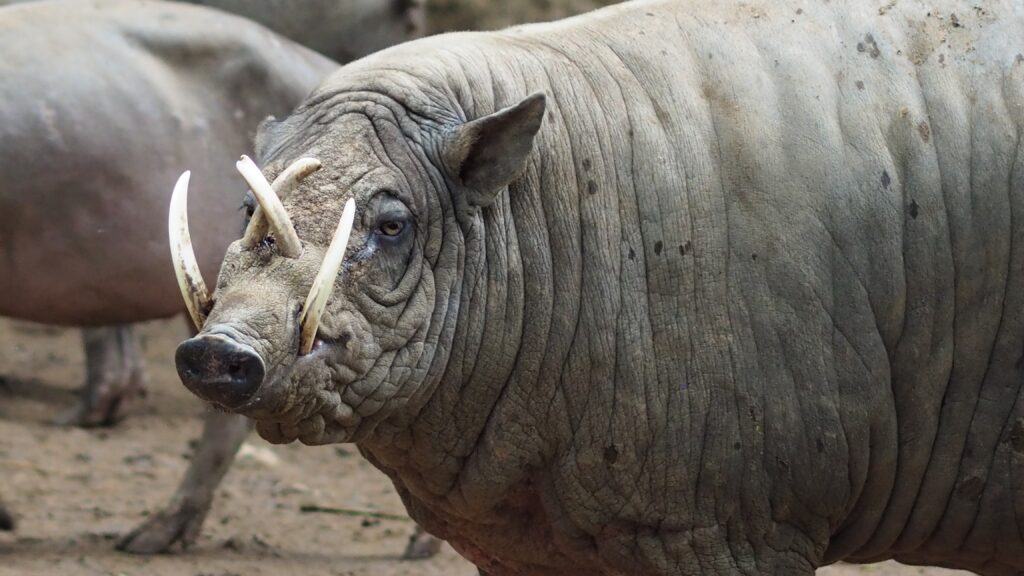
The babirusa is a fascinating species of wild pig native to the Indonesian islands, particularly Sulawesi. What makes them truly bizarre are the males’ extraordinary tusks, which grow upward through their snouts and curve backward toward their foreheads. These tusks are not just for show—they’re used in dominance fights between males, as well as for foraging. Interestingly, these can grow so long that if left unchecked, they can actually penetrate their skull. These reach up to 17 inches in length and serve as a strong evolutionary trait that has both benefits and consequences. They are omnivores, eating a diet of fruits, leaves, small animals, and even carrion. They live in tropical forests and swamps, and their pig-like body paired with their deer-like legs give them a unique, otherworldly appearance. Their social behavior is relatively solitary, and they tend to avoid human contact in their dense, remote habitats. Although primarily forest dwellers, babirusas are also known to swim well and sometimes venture to nearby islands.
Maned Wolf (Chrysocyon brachyurus)
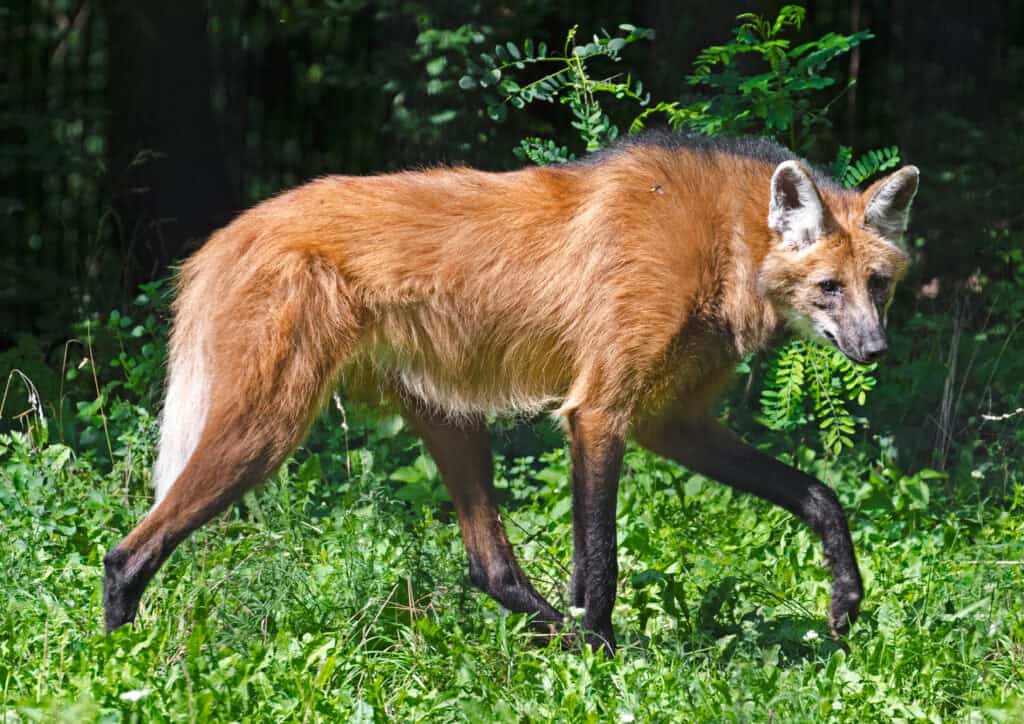
The maned wolf is a strikingly unique canid, known for its long legs and reddish coat, native to the grasslands of South America, particularly in Brazil, Paraguay, and Argentina. Despite its name, it is not closely related to wolves or foxes but belongs to its own genus. Its long legs allow it to see above tall grasses, giving it a stilt-like appearance and helping it navigate its habitat with ease. Its mane, which runs along the back, is raised when the animal feels threatened, making it appear larger. They are omnivores, consuming small mammals, fruits, and insects, and are particularly fond of a fruit called the wolf apple. Their diet is about 50% plant-based, which is uncommon for canids. These animals are solitary and communicate through low-frequency calls, marking their territory with a pungent-smelling urine. Though shy, they are incredibly adaptable and have even been seen near human settlements.
Dugong (Dugong dugon)
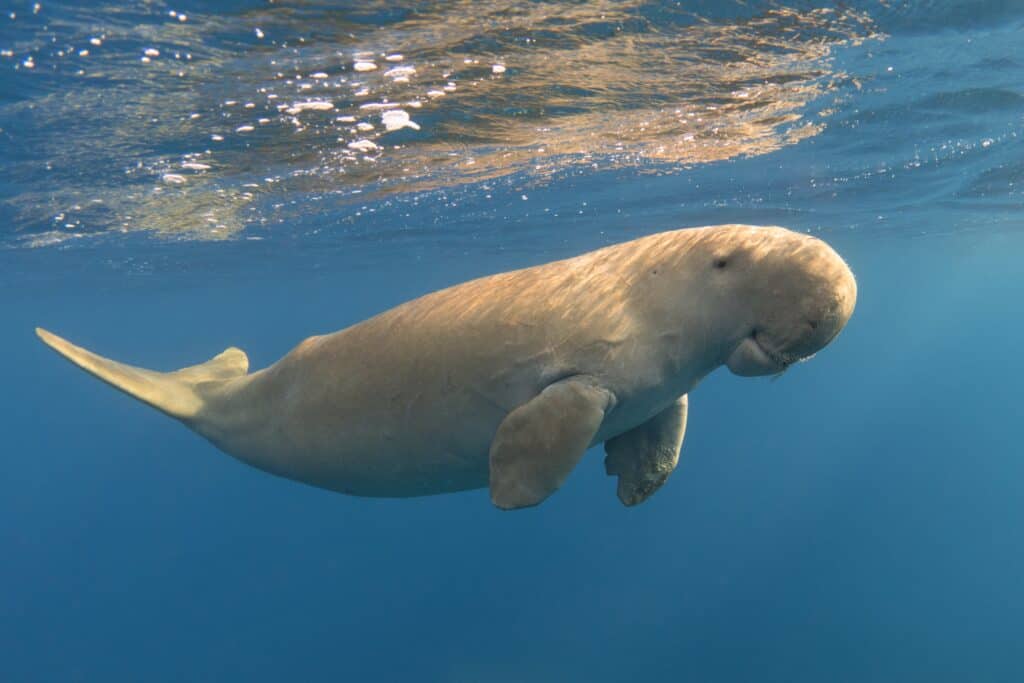
The dugong is a gentle marine mammal that inhabits warm coastal waters from East Africa to Australia. Often mistaken for a manatee, it has a distinct dolphin-like fluked tail and a downturned snout, which it uses to graze on underwater seagrass. Its herbivorous diet is unique among marine mammals, and it can consume up to 40 kilograms of seagrass a day. They are known for their slow-moving, peaceful nature, contributing to ancient tales of mermaids spotted by sailors. Despite their bulky appearance, they are agile swimmers, capable of diving up to 37 meters deep. They communicate through a variety of vocalizations, including chirps, whistles, and barks. What makes it even more remarkable is its slow reproduction rate; females only give birth every 3 to 7 years. This long inter-birth interval makes the conservation of dugong populations especially challenging.
Okapi (Okapia johnstoni)
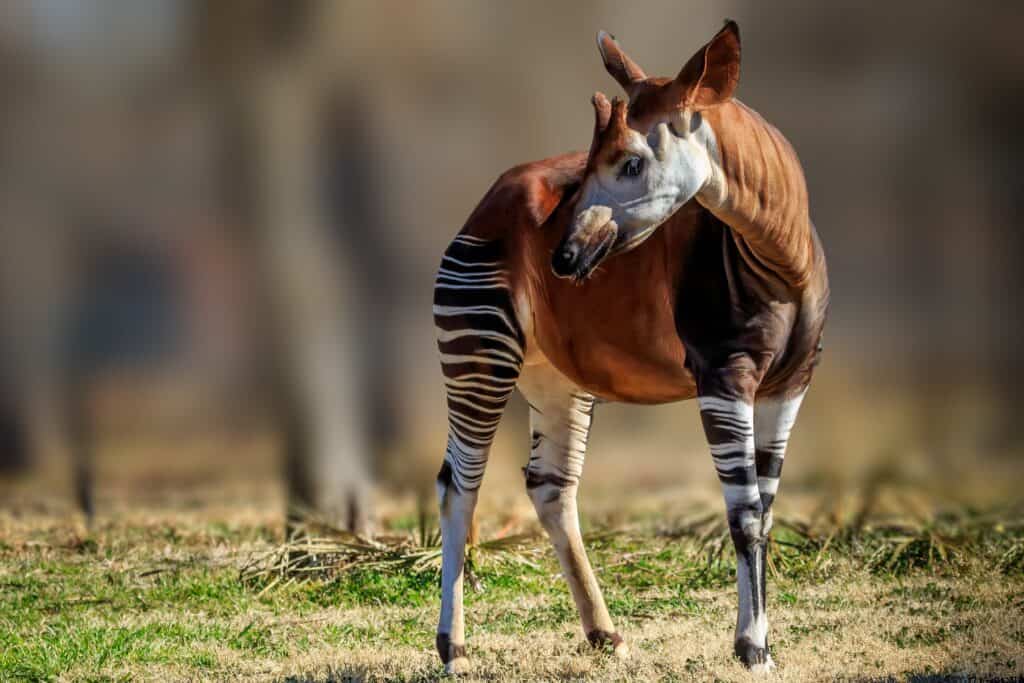
The okapi, native to the dense rainforests of the Democratic Republic of the Congo, is a remarkable creature that combines features of both giraffes and zebras. Often referred to as the “forest giraffe,” it has a long neck and legs similar to a giraffe, but its body is covered in velvety, chocolate-brown fur with striking white, zebra-like stripes on its hindquarters and legs. These stripes help the okapi blend into its forest environment, providing effective camouflage from predators. Unlike giraffes, okapis are solitary animals that navigate the dense underbrush using their acute sense of hearing. Their prehensile tongues are long enough to clean their own eyes and ears, an adaptation that helps them strip leaves from branches. They also have scent glands on their feet, which they use to mark their territory. This, combined with their remarkable agility in the dense forests, makes them elusive and difficult to observe in the wild. Its secretive nature meant it was unknown to science until the early 20th century, despite being known to the local people for centuries.
Pangolin (Manis spp.)
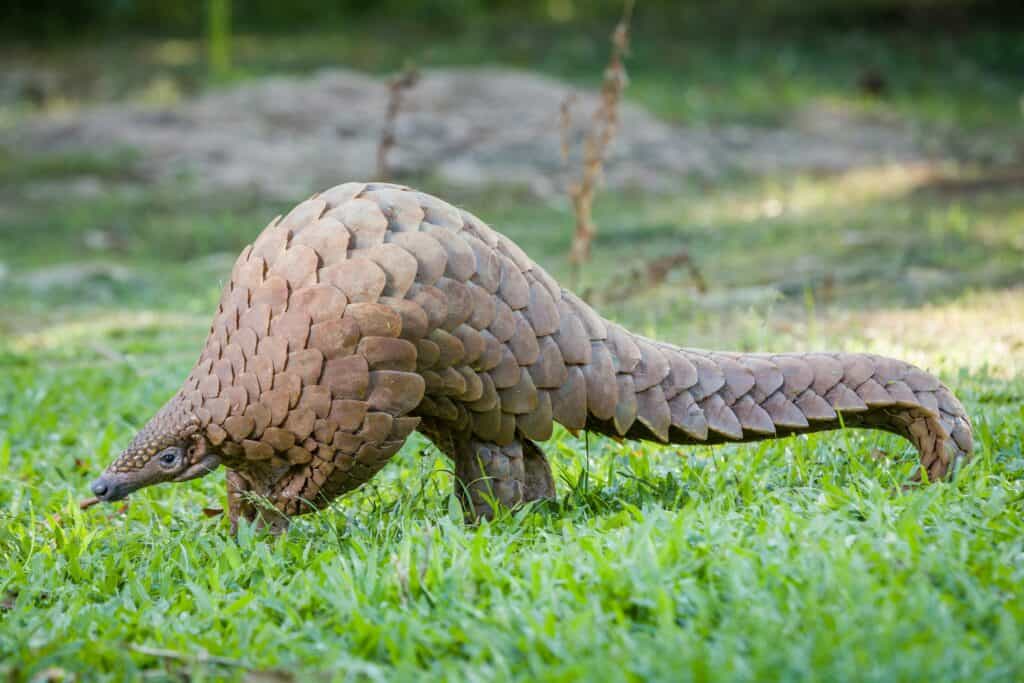
Pangolins are unique mammals covered in tough, overlapping keratin scales that resemble a suit of armor. Found in parts of Africa and Asia, these nocturnal creatures have evolved specialized adaptations for eating ants and termites, including long, sticky tongues that can extend up to 16 inches. Unlike most mammals, they have no teeth and instead rely on small stones they ingest to grind up food in their stomachs. When threatened, they curl into a tight ball, using their scales as a defense against predators. Unfortunately, these fascinating creatures are the most trafficked animals in the world, as their scales are highly prized in traditional medicine. They are solitary animals that spend much of their time burrowing or searching for food in the wild. Interestingly, their scales are made of the same material as human fingernails.
Naked Mole-Rat (Heterocephalus glaber)
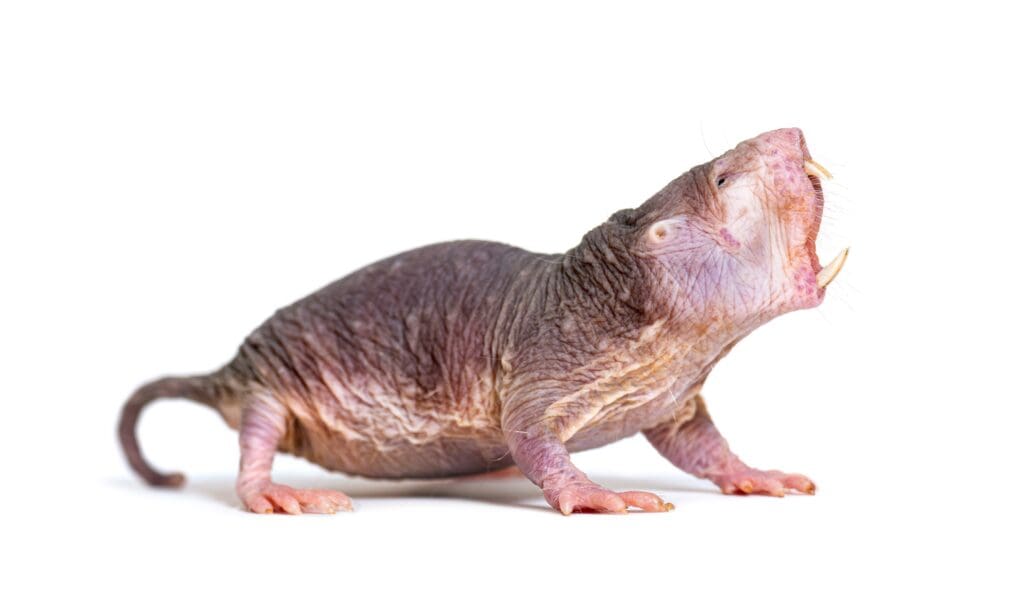
The naked mole-rat is a bizarre rodent native to the dry grasslands of East Africa. These animals are almost entirely hairless, with wrinkled, translucent skin and a tubular body. They live in eusocial colonies much like ants or bees, with a single queen responsible for reproduction. They are known for their incredible resistance to pain and cancer, which has made them a subject of intense scientific research. Their underground burrows are complex, and they thrive in low-oxygen environments that would be lethal to most mammals. Additionally, they have an unusually long lifespan for rodents, living up to 30 years in captivity. Their powerful jaws allow them to dig extensive tunnel systems, and they communicate using a series of squeaks and chirps. Another fascinating feature is that they have very low metabolic rates, allowing them to survive on minimal food. They are also virtually cold-blooded, a trait almost unheard of in mammals.
Fossa (Cryptoprocta ferox)
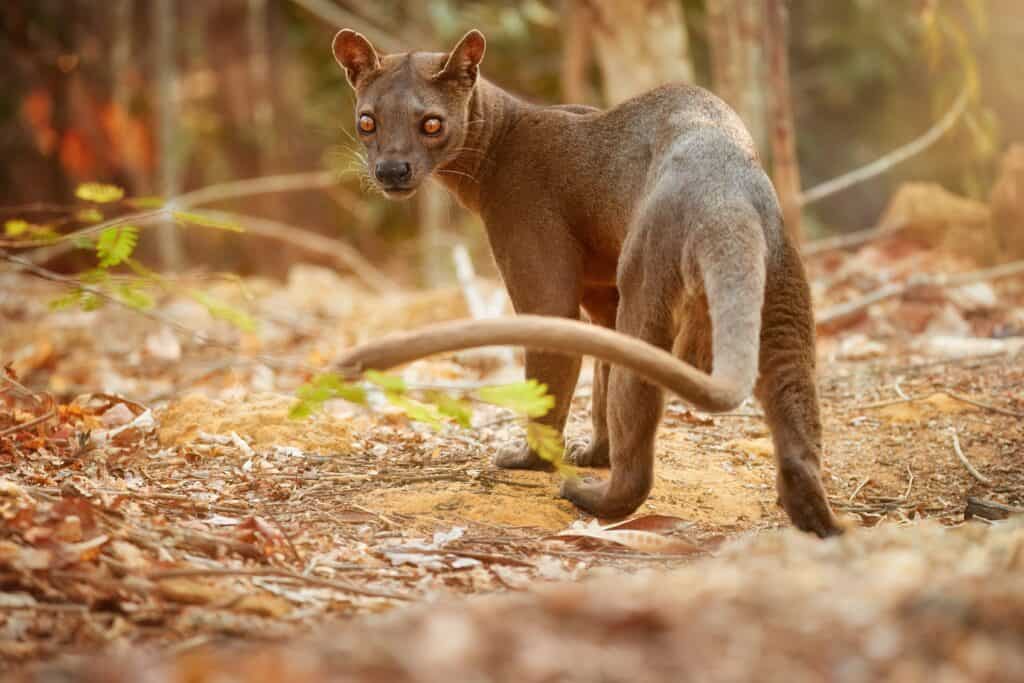
The fossa is a carnivorous mammal native to Madagascar and is the island’s largest predator. Despite its cat-like appearance, the fossa is more closely related to the mongoose family. Its slender body, muscular limbs, and long tail give it incredible agility, making it an adept climber. They have semi-retractable claws and flexible ankles, which allow them to descend trees headfirst and navigate complex forest environments. These animals are solitary hunters and primarily feed on lemurs, which make up about 50% of their diet. Its long, slim body and relatively small head, paired with its large eyes, give it a sleek and mysterious look. They are known to have unique scent glands used for marking territory. Their powerful hind limbs and dexterous paws also enable them to leap impressively between tree branches, allowing for a more versatile hunting range.
Sunda Flying Lemur (Galeopterus variegatus)
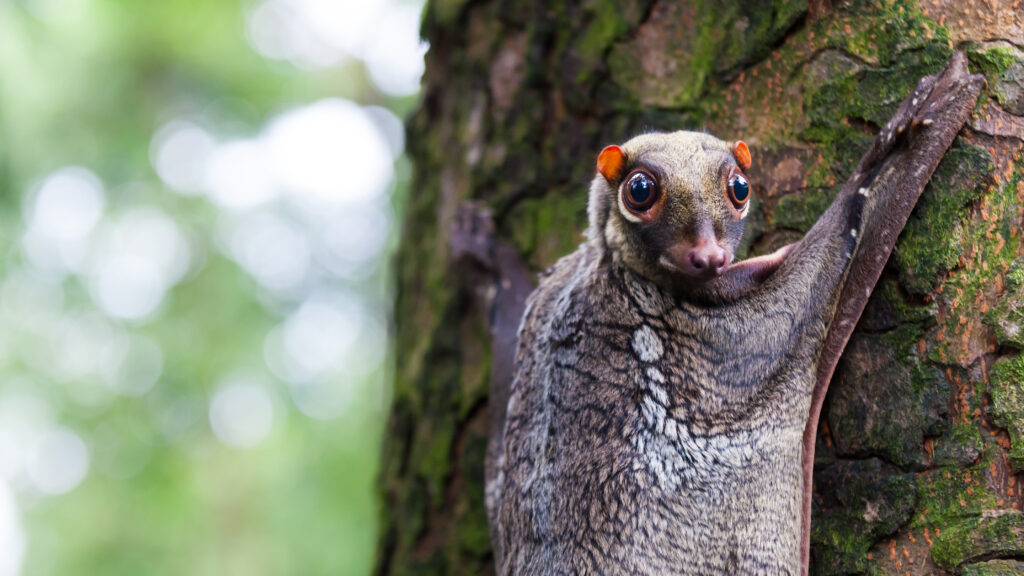
Despite its name, the Sunda flying lemur, or colugo, neither flies nor is it a true lemur. Found in Southeast Asian rainforests, this nocturnal mammal uses a thin membrane of skin called a patagium to glide between trees, covering distances of up to 100 meters in a single leap. The patagium stretches from the colugo’s neck to the tips of its toes and tail, allowing it to live almost entirely arboreal lives. These creatures are excellent climbers but slow and awkward on the ground, making them vulnerable to predators if they fall. They feed on a diet primarily consisting of leaves, flowers, and young shoots, which they chew with specialized teeth. They are solitary animals, often resting during the day while clinging to tree trunks. Their gliding ability helps them conserve energy as they search for food across the forest canopy. Interestingly, they are among the closest living relatives to primates despite their distinctly different lifestyles.
Gerenuk (Litocranius walleri)
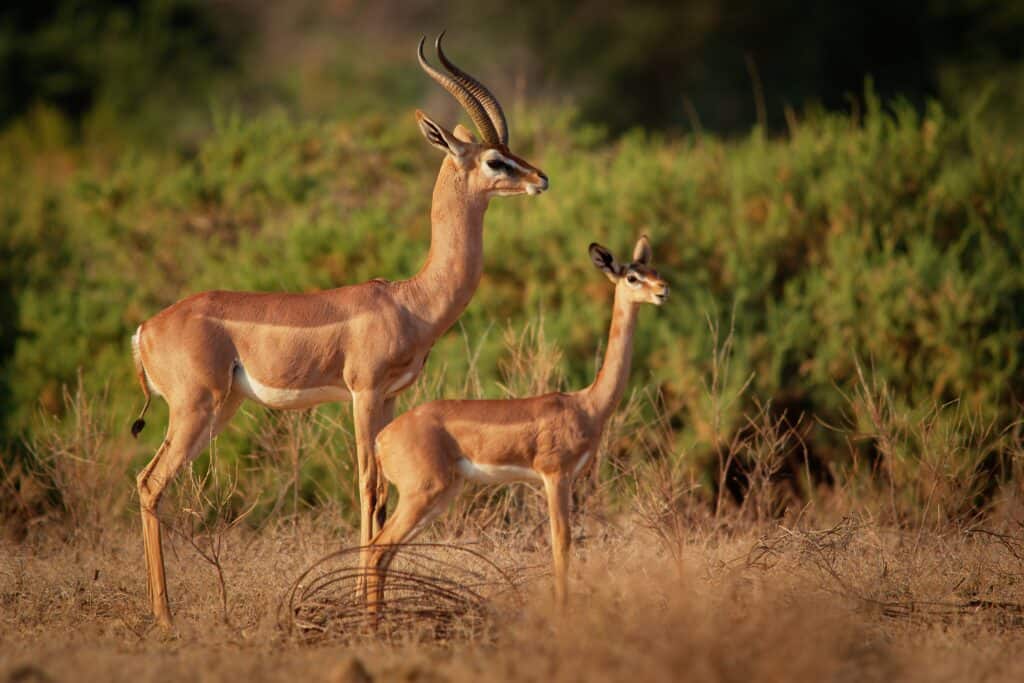
The gerenuk, or Waller’s gazelle, is a long-necked antelope native to the dry bushlands and savannas of East Africa. One of its most unusual characteristics is its ability to stand on its hind legs to reach leaves and branches that other herbivores cannot. This behavior, paired with its elongated neck, makes it uniquely adapted to feeding on the sparse vegetation of its arid habitat. They are known for their large, expressive eyes and slender build, which make them appear graceful, even while standing on two legs. These antelopes are primarily browsers and have a diet consisting of leaves, flowers, and fruits. Their long, thin legs may seem fragile, but they allow for swift escapes from predators. They are also known to go long periods without drinking water, getting most of their hydration from their diet. Their unique feeding method reduces competition with other herbivores. Additionally, they are shy animals that prefer to stay hidden in the dense thickets of their habitat.
Irrawaddy Dolphin (Orcaella brevirostris)
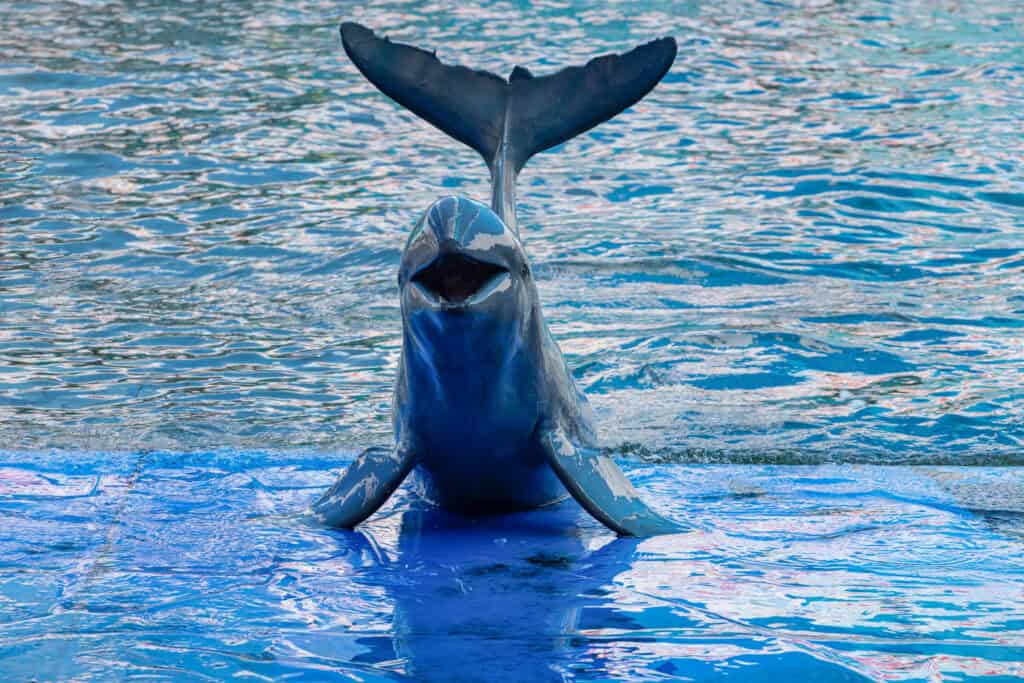
The Irrawaddy dolphin is a freshwater and coastal dolphin species found in Southeast Asia, particularly in rivers such as the Mekong and Irrawaddy. Its rounded forehead and lack of a pronounced beak give it a distinctive appearance compared to other dolphins. What sets it apart is its unique relationship with local fishermen. In some regions, these dolphins herd fish into the fishermen’s nets and are rewarded with a share of the catch, creating a mutualistic relationship between humans and dolphins. They are highly social creatures and are known to live in small, cohesive groups. They communicate using a variety of clicks and whistles, which they use to navigate murky waters. However, their population is critically endangered due to habitat loss, entanglement in fishing gear, and pollution. They can survive in both freshwater and saltwater environments. Their distinctive behavior of “spitting” water while hunting has also been observed, which they use to corral fish.
Tufted Deer (Elaphodus cephalophus)
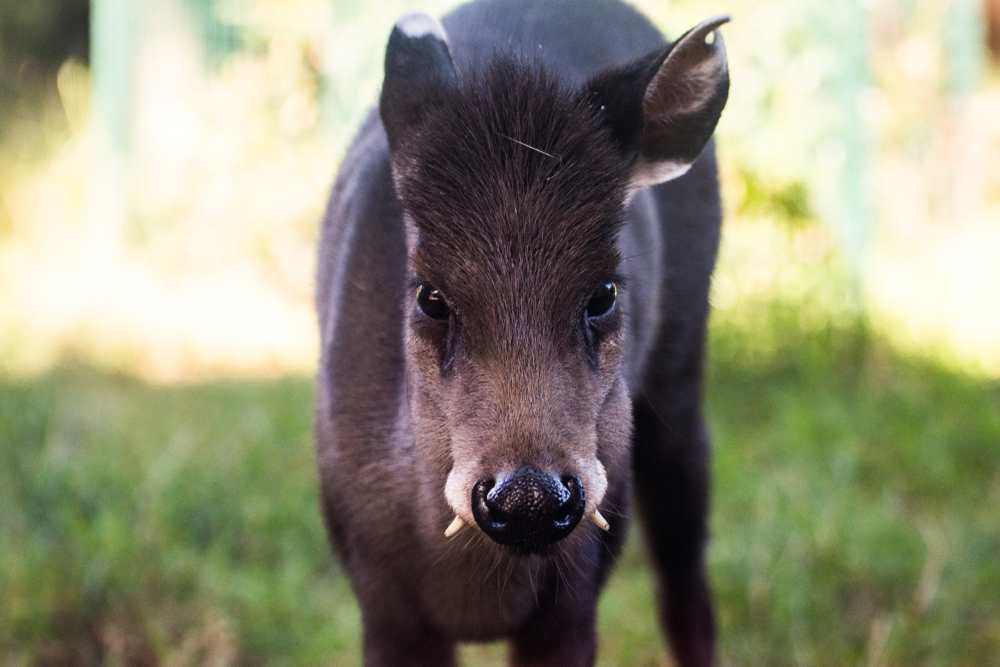
The tufted deer is a small species of deer native to the mountainous forests of central China and northeastern Myanmar. Named for the small tuft of black fur that grows on its forehead, its most unusual feature is its long, protruding canine teeth, which resemble fangs. These fangs are more prominent in males and are used during fights over mates, much like antlers in other deer species. Despite their fearsome appearance, they are shy and elusive, typically feeding on leaves, fruits, and grasses in the forest underbrush. They are solitary animals and are most active during dawn and dusk. Their brownish-gray coat allows them to blend into their forest environment, making them difficult to spot. These deer are known for their sharp alarm call, which sounds like a bark, and their impressive ability to sprint up steep hillsides when threatened.
Vaquita (Phocoena sinus)
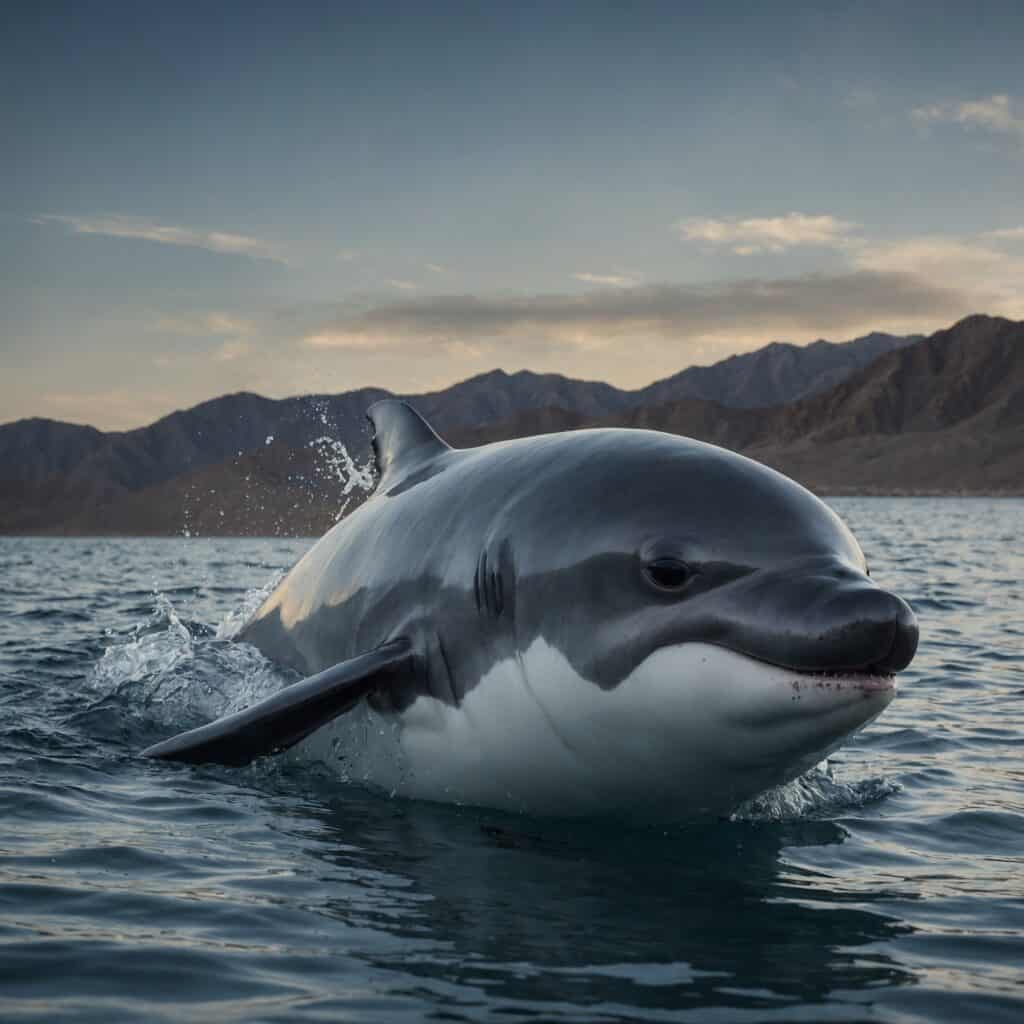
The vaquita is the world’s rarest marine mammal, native to the northern part of the Gulf of California. This small porpoise has a round body, a blunt snout, and distinctive black patches around its eyes and mouth. Discovered only in 1958, it has been driven to the brink of extinction due to entanglement in illegal fishing nets. They are shy and elusive, preferring to avoid boats and human activity, which makes them difficult to study in the wild. They are solitary animals that primarily feed on small fish and squid in shallow waters. With only about 10 individuals remaining, conservation efforts are critical to prevent their extinction. Their small size—about 4 to 5 feet long—allows them to navigate the shallow waters of their habitat easily.
This article originally appeared on Rarest.org.
More from Rarest.org
10 Largest Castles in the World

Castles have long been symbols of power, grandeur, and history, with many of the world’s largest ones standing as architectural marvels today. These massive structures not only served as homes for royalty and nobility but also as fortresses of defense. Read More.
10 Oldest Cars Ever Created

The history of automobiles dates back to the late 18th and 19th centuries, when inventors across the globe were experimenting with new forms of transportation. Some of the earliest cars were powered by steam, electricity, and gasoline, each contributing to the development of modern vehicles. Read More.
9 Largest Owls in the World
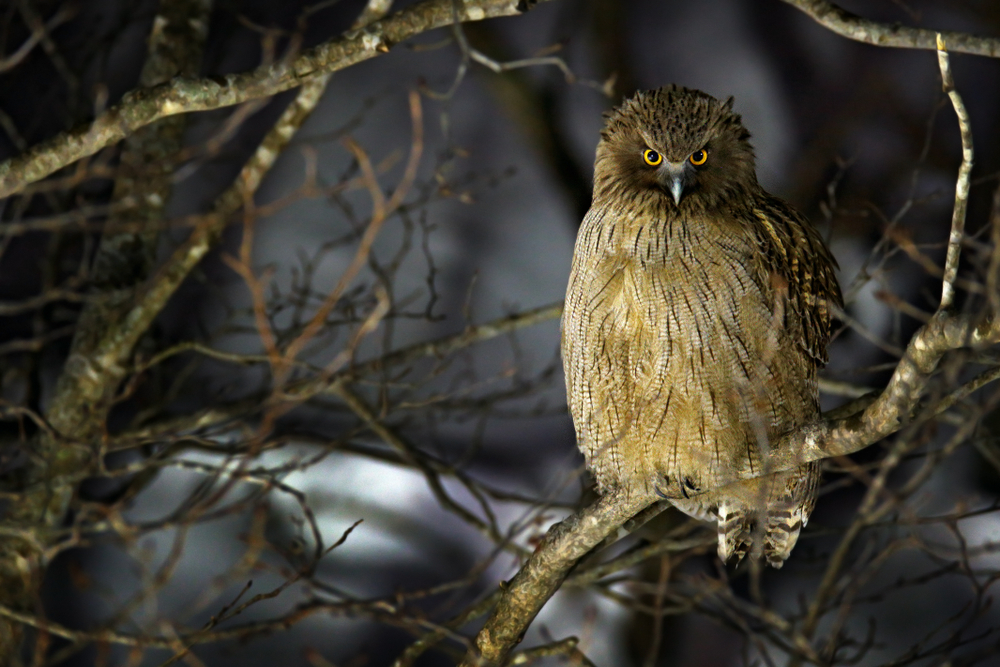
Owls are some of the most fascinating birds in the world, known for their silent flight, keen hunting skills, and striking appearances. Among them, the largest species stand out not only for their size but also for their unique adaptations to various environments. Read More.
